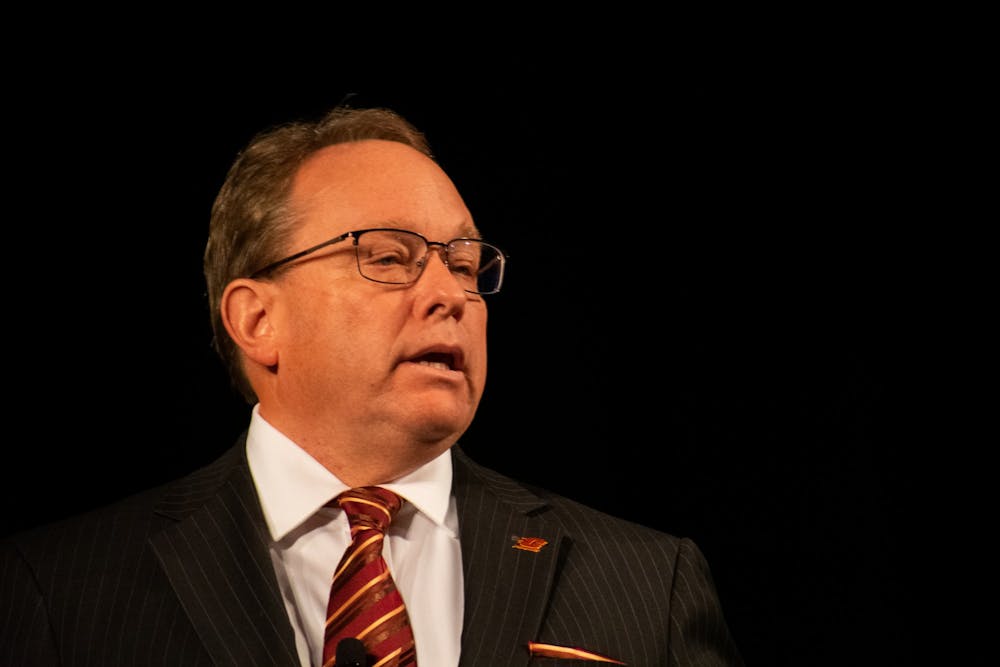Five year strategic plan comes to an end at 2022 State of the University Address

Despite the challenges of a global health crisis, Central Michigan University President Bob Davies reflected on the successes of the last two years and said he plans to rely on a tradition of change.
The 2022 State of the University Address, delivered Oct. 19, was the first in-person address since the COVID-19 pandemic. In his speech, Davies discussed the resulting university-wide challenges.
According to Davies, there were mixed reactions to pandemic changes and regulations on campus. However, that is a sign of accessible leadership and a healthy community, he said.
“How do we meet the needs of a world that is constantly, rapidly evolving?” Davies said.
This semester was a turning point for enrollment decline, according to Davies, and this, along with a revitalization of CMU’s leadership team were the main successes of 2022.
“This did not occur by accident, nor by chance,” Davies said. “This was accomplished through a focused implementation of strategies and investment of resources and time.”
CMU’s leadership team now includes Provost Nancy Mathews and Vice President of Student Affairs Renee Watson.
Davies also addressed some of the challenges CMU and other universities are facing in the current economic climate. The university must remain accessible financially, but continue providing quality programs to its students, Davies said.
Many high school graduates who pursue higher education earn credits from community colleges before enrolling in a full-time university to save money.
“When you look at the tuition levels, they are less expensive, but the value of being on a college campus, specifically CMU, for the full four years is [that] you get to know the professors earlier,” Davies said.
This year marked the expiration of the five-year strategic plan that has been driving university advancement goals. Part of this plan was the expansion of various programs such as: education, business, business information, computer science and health professions.
Most major program changes were in STEM subjects, but all changes were based on the needs of the student body and larger community, Davies said.
“In all that we do we remain grounded in the vital liberal arts program that develops leadership, communication, critical thinking and cultural awareness,” Davies said.
The new strategic plan is still being constructed. The most important part of the plan, according to Davies, is the process.
“Because that forces the community and the individuals intimately involved with it to think,” Davies said. “And those efforts, I think, are critically important.”
Some of the people in attendance were students from the Communications 461 class with a Bingo assignment. They spoke with Davies before the event, and got an impromptu mention at the end of the address.
The professor of this class, Elizabeth Carlson, also attended the address. Carlson said she gave the assignment to exemplify their current chapter.
“We’re talking about how leaders in organizations need to be focused on helping the organization adapt and influencing the culture, and events like this provide those kinds of messages,” she said.






